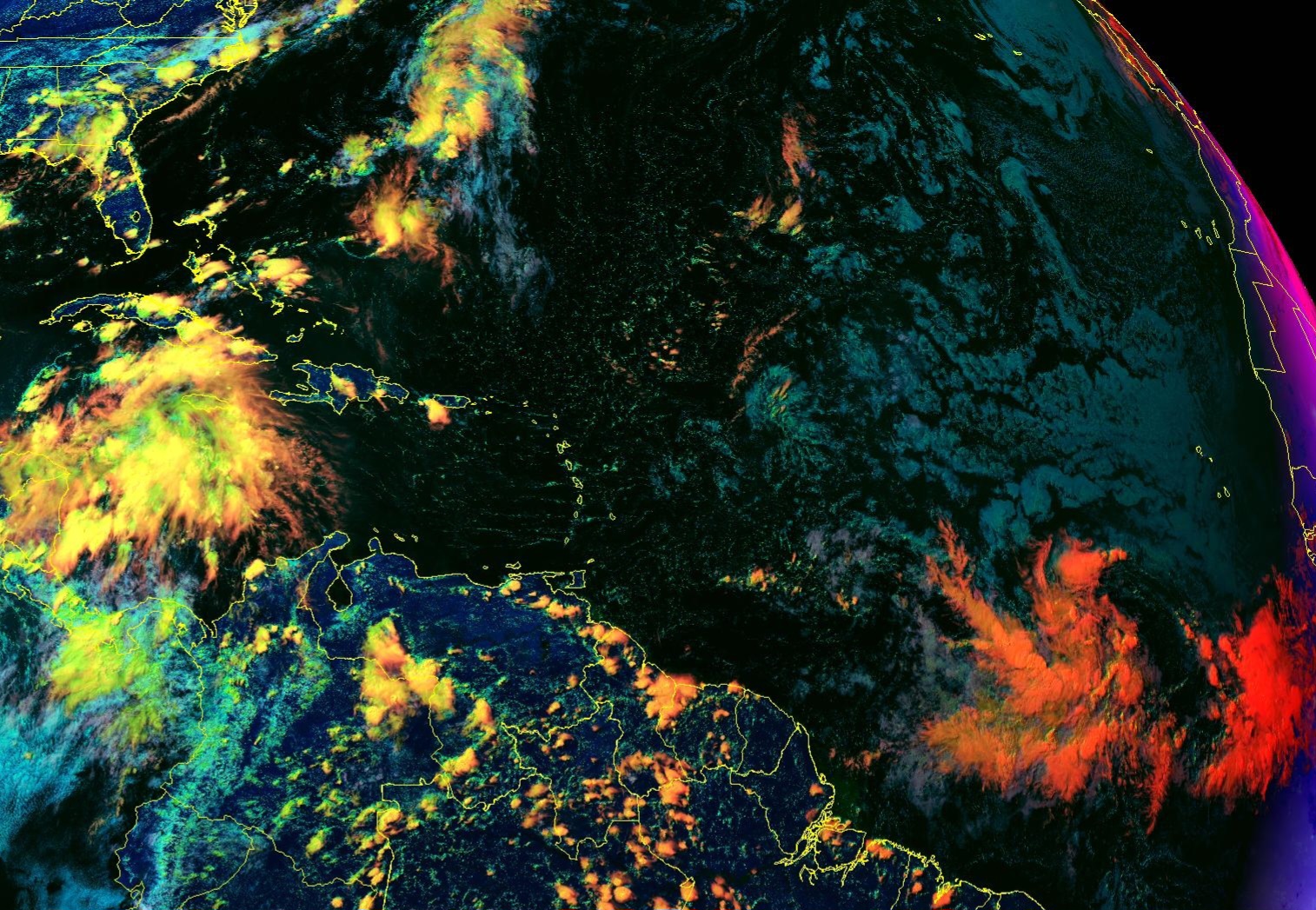
| NOAA GOES-EAST Satellite Imagery shows Sahara dust off the Florida coast (orange) on June 27, 2024. |
WEST PALM BEACH, Florida – NOAA GOES-EAST Satellite Imagery shows a giant Saharan dust cloud making its way across the Atlantic Ocean toward the Caribbean, Florida, and the Gulf of Mexico this week. This could mean a pause in 2024 hurricane and tropical storm formation but also spark harmful algae blooms around the Sunshine State.
Because the dust particles are so small – often less than 0.002 mm across – they can remain aloft for days as they ride global rivers of air.
Larger grains of sand don’t get airborne as often or for as long, but they can be pushed along the ground by the wind or washed away by water erosion.
The Saharan dust clouds cross the Atlantic Ocean and reach the Caribbean and the Americas in about 5 to 7 days.
NOAA researchers discovered that Saharan dust storms containing tiny specks of dust are linked to suppressed hurricane activity in the Atlantic.
Jason Dunion, a hurricane researcher at the NOAA Atlantic Oceanographic and Meteorological Laboratory’s Hurricane Research Division in Miami, Florida, and his colleagues at the University of Wisconsin-Madison, studied the past 25 years of satellite data prior to 2006.
They found that during times of intense hurricane activity, the large clouds of dust that periodically blow westward from the Saharan Desert are relatively scarce.
In years when there were fewer hurricanes, the dust storms were stronger and tended to spread over much of the Atlantic and the Caribbean Sea.
Saharan dust clouds can also cause harmful algae blooms in Florida.
A NASA study discovered that iron-rich sand which traveled from the Sahara Desert sparked a red tide algae bloom off the coast of Florida.
The iron became food for bacteria, which then produced a usable form of nitrogen that the red tide algae could consume and grow quickly.
The iron also gives Sahara dust its slightly orange color.
Copyright 2023-2025 FloridaWord.com